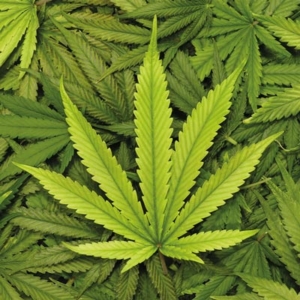Hemp in mattresses, hemp in quilts, hemp as fabric, …
HEMP – Its more than thousand years old history and the rediscovery today
As a textile useful plant, hemp is already proven circa 7000 BC and is thus considered the plant for the first proven woven fabric. As the most stable natural fiber in the world, it was also used by the Phoenicians around 1000 BC to make sails and ropes.
From then until the second half of the last century, hemp was the most commonly grown crop. The first president of the United States, George Washington, instructed his estate managers to grow hemp on a large scale. In 1619, there was the first marijuana law that prescribed hemp cultivation. Those who did not often received fines or prison sentences: it was considered a capital offense to export hemp, as people had always been aware of its importance.
Hemp as a paper and printing base
Gutenberg’s paper for the first printed Bible in 1455 AD and Luther’s paper in 1517 for the 95 Theses – all made of hemp. Qualitatively, hemp paper is far superior to paper made of wood, because it is much more durable.
Benjamin Franklin, also president of the USA founded the first hemp paper mills.
Also from an ecological point of view, it is urgent to use hemp for paper production: You get 5 times the yield per area from a hemp field during production and our forests do not have to be cut down unnecessarily. OUR FORESTS WILL THANK US!
Hemp as a food
In 800 AD, Charlemagne ordered his subjects to grow hemp to fight famine – after all, the sturdy, meter-high stalks of the plants could not be crushed even by storms. Not only as lamp oil, but especially as a high-quality food, the seeds were irreplaceable. Today, it has been proven that hemp seeds (“hemp nuts”) contain all essential fat acids. In addition, hemp seed is the only food that contains gamma-linolenic acid. This is otherwise found only in breast milk! Early weaning is now discussed in connection with the clinical pictures of neurodermatitis and psoriasis. There are reports that hemp oil helps heal neurodermatitis and psoriasis when ingested or rubbed on the affected areas.
Hemp as a currency
As early as 800 AD under Charlemagne, farmers could pay their taxes in hemp seed, and between 1631 and the early 19th century, cannabis was legal currency in much of North America.
Hemp as a narcotic
The psychoactive effect (Goethe and Schiller also smoked pot!) of hemp has been used for thousands of years. The medicinal use is already described in the oldest preserved pharmacopoeia of mankind, the Chinese “Pen Tsao” 2737 BC. By the end of the 1900s, cannabis preparations were the best-selling medicines in pharmacies in the United States and Europe.
Hemp in insulation
It is precisely the durability and non-molding when wet that made hemp indispensable as a sealing material for plumbers as well. Today, the shives (the wood portion of the plant stalk) produced during textile manufacturing are processed into high-quality insulating material.
The historical “end” of hemp
Until its cultivation was banned in the USA in 1938 and in Europe after the Second World War, textiles were made from hemp in almost all cultures. At the same time, machine cotton processing became more and more important and the cotton barons took the reins, so that hemp production was gradually decreased.
The following hemp prohibition served probably exclusively economic interests of the wood, cotton, and pharmaceutical industry. After the failure of the 1920 Alcohol Prohibition, some 8,000 civil servants, police officers, and inspectors were left without jobs, so the U.S. government supported the specially created Federal Bureau of Narcotics in the war on hemp that began in 1937, leading to hemp’s ultimate demise.
OUT OF ECOLOGICAL RESPONSIBILITY FOR OUR EARTH, IT IS IMPERATIVE TO REINTEGRATE HEMP INTO OUR EVERYDAY LIFE: JOIN US, WE DO IT TOO!
SOURCES: The rediscovery of the useful plant hemp ISBN 3-86150-641-6 | Info.hempage.de



